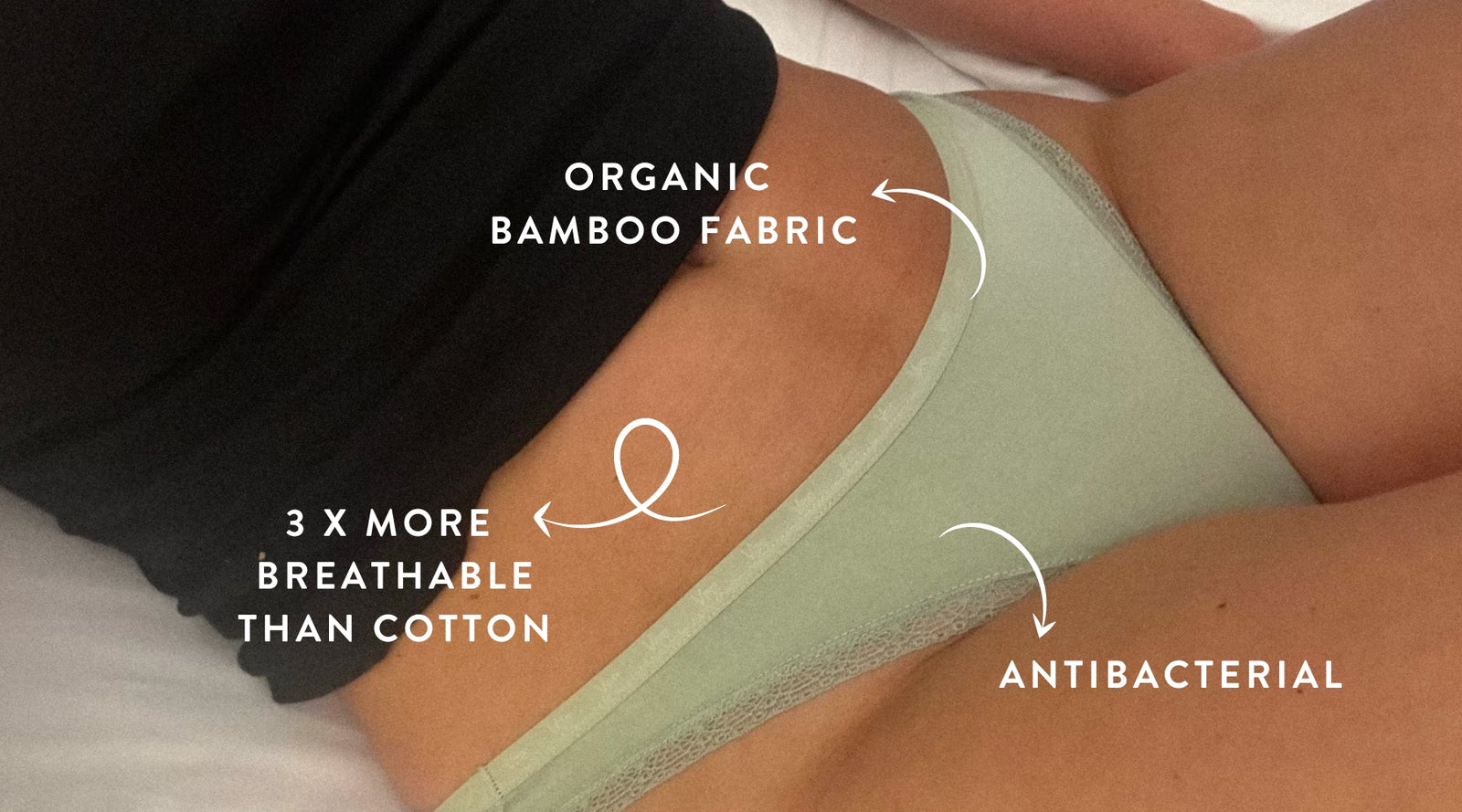Vee’s Sustainable Fabrics Guide: Are Your Undies Good for the Planet?

Cotton, Polyester, Nylon oh my! Your lady bits do the bump and grind with many different fabrics. But do you know which ones are good for both your vajayjay and the planet? See how these common fabrics measure up in our sustainability report card.
Whether you’re sporting a gstring, bikini or boyleg undies, your lady bits are getting up close and personal with a hodgepodge of different fabrics. These synthetic and chemically treated fibres could pose health risks to your hoo-ha. And just as importantly, their production could be destroying the planet.
No, that’s not your skin crawling, it’s just the chemicals from your clothing.
Cotton - The sponge of the textiles world
While cotton may be king of the textiles crop, with over 39,000 tonnes produced annually, this common fabric is getting dethroned on our sustainable report card.
Although there are some amazing organic cotton companies out there, which work on reducing the footprint that normal cotton crops produce, generic cotton is a heavy strain on our water resources.
Did you know, it takes up to 10,000 litres of water to produce 1 kilo of mass-produced cotton? If we do the math, that’s approximately 2,700 litres to make 1 cotton shirt. That’s a lot of foreplay! Yet cotton production continues to steam ahead, regardless of the devastating environmental consequences. The Aral Sea in Central Asia is drying up faster than that Tinder fuckboy’s chances with you. And the majority of its disappearance is due to the international demands of mass cotton farming.
More chemicals are used in growing cotton than almost any other crop. These pesticides often pollute nearby water resources, creating unsafe drinking water and health problems in surrounding communities. If this isn’t something of a red flag, remember, a woman’s vagina is one of our most absorptive organs which is directly linked to our reproductive bits. Think about that the next time your fresh cotton panties are up close and personal with your vajayjay.
Synthetic Fabric Family: Polyester, Viscose (Rayon), & Nylon
Polyester, Viscose and Nylon fabrics are fanny friendly in small doses, but these types of materials can trigger not-so-sexy side effects like chafing, itching and redness as well as an increased chance of yeast or other bacterial infections. Our Vee vaginal report recommends limiting the amount of time spent in these fabrics, making them passable for lingerie you plan to take off in a hurry. Let’s see how they stack up in an environmental setting.
Polyester: Plastic Fantastic
Are your underwear made of polyester? Don’t worry, it’s very common. In fact this synthetic fabric absolutely dominates in the clothing industry with more than 22.67 billion tonnes produced globally. So what the heck is rubbing up against your bits?
Polyester is an artificial plastic fibre which is used to make commercial fishing nets, seat belts and that sexy piece of lingerie in your bedside table. This fabric is made from petrochemicals (think gasoline) which are absorbed into the skin of the wearer (your vagina, in this circumstance). The majority of these fibres are not biodegradable, create a tonne of pollution and those who work in the industry report higher incidences of cancer and lung disease than other populations.
Viscose (Rayon): Nature’s alternative?
Referred to as a sustainable alternative to cotton or polyester, viscose is a plant-based fibre which is non-polluting or toxic. It’s also grown from fast-growing sources such as beech, pine or eucalyptus trees. However… due to the rising demand for fast fashion, a lot of the viscose material on the market today are manufactured cheaply, using harsh chemicals which have horrible effects on workers. This industry also heavily contributes to deforestation. An estimated 30% of rayon and viscose are made from trees out of endangered or ancient forests. It sounds like this alternative is not all it’s cracked up to be.
Nylon: It might make our butts look good, but is it good for the planet?
Although nylon holds its title as the world’s first synthetic fibre, it leaves a lot to be desired when it comes to the world. During World War II, it was used in parachutes, rope and tents. Today, nylon is found in obvious places like our swimwear, leggings and activewear and not-so-obvious places, like toothbrushes and umbrellas.
This type of plastic fabric is made from using heated up carbon chemicals from crude oils. So not only is nylon supporting some of our dirtiest industries, but its production is also a widespread producer of greenhouse gases, a burden on our water resources and an energy sucker which contributes to global warming. Plus it’s not biodegradable. Forget diamonds are forever, nylon will sit in landfills for at least 30 years.
Motion Sustained!
Sustainable panties are a breath of fresh air - quite literally as most sustainable, organic fabrics encourage good downstairs ventilation. They feel great on your skin and don’t contain any of the nasty chemicals which could be lingering on other common fabrics.
And since 85% of Australian textiles end up in landfills, it’s important to do your homework and purchase underwear that have a reduced environmental impact. If you choose to invest in sustainable lingerie, you’re promoting both a healthy hoo-ha and a healthy planet. If that’s not sexy, then we don’t know what is.
Shop our organic bamboo underwear, good for the planet and your vagina.




